Recent Posts
Easy Steps to Create Your Family Emergency Communication Plan
1/15/2024 (Permalink)
In regions like New York where the weather can be unpredictable, residents are well aware of the issues inclement weather conditions can cause, such as icy roads during snowstorms or the damage left behind by powerful thunderstorms. At SERVPRO of New Hyde Park/Mineola, we firmly advocate that preparation is key to facing these events safely and ensuring the well-being of your family. Here are a few easy steps to formulate a functional and effective plan:
Step 1: Collect Contact Information
Kick-start your plan by gathering and documenting the contact details of all family members. This includes landlines, cell phones, emails, and work contact details. It can also be beneficial to include the contact information for out-of-town relatives and local emergency services.
Step 2: Choose Emergency Meeting Locations
Identify a couple of accessible meeting places where your family can regroup after a storm in case of a power outage or if cell networks are down. Suitable choices might be local landmarks, schools, or community centers.
Step 3: Identify Safe Shelter Locations
In some instances, evacuating may not be safe or viable. Thus, decide on areas within your house where you could safely shelter during a storm, for example, small interior rooms that are devoid of windows.
Step 4: Account for Unique Family Needs
Take into account any specific needs of your family members while preparing your plan. Consider elements like essential medication, supplies for infants, and the needs of pets.
Step 5: Regular Drills
Make a point to practice your plan regularly with all family members to ensure everyone knows what to do during a storm.
When the storm subsides, remember that SERVPRO of New Hyde Park/Mineola - your local storm damage repair professionals are just a call away to provide prompt service. Our objective is to help get your life back to normal as quickly and seamlessly as possible. Each member of our professional team brings a wealth of experience and expertise to ensure every job, regardless of its size, is conducted to make your home feel “Like it never even happened.”
While storms cannot be prevented, having a Family Emergency Communication Plan ensures that you are swift and ready to weather any storm that comes your way efficiently and effectively.
Protecting Your Pets from House Fires
12/13/2023 (Permalink)
In today's blog, we're focusing on the often overlooked but cherished members of our households—our pets. New Hyde Park, NY, is a community where pets hold a special place in many hearts, and it's essential to know how to safeguard them in the event of a home fire. Read on to discover valuable tips and information to ensure the safety of your furry friends during a fire emergency.
Why Pet Fire Safety Matters
New Hyde Park is a beautiful place to call home, but it's not immune to fire risks. From electrical issues to cooking accidents, the potential for fires exists. Protecting your pets is a vital aspect of overall fire safety. Our pets can be vulnerable and may not be able to escape on their own, making it crucial to have a plan in place.
Key Steps to Protect Your Pets During a Home Fire
- Include Pets in Your Fire Safety Plan: Ensure that your family's fire safety plan includes provisions for your pets. Designate someone responsible for each pet and establish designated evacuation routes for both humans and animals.
- Secure Pet-Friendly Stickers: Place pet alert stickers near entrances to inform firefighters about the number and types of pets in your home. Include your veterinarian's contact information for emergencies.
- Create a Pet Emergency Kit: Assemble a pet emergency kit that includes their food, water, medications, leashes, carriers, and comfort items. Keep it accessible for a quick evacuation.
- Pet-Friendly Escape Routes: Train your pets to respond to voice commands and go to a specific location for quick retrieval during evacuations.
- Practice Fire Drills: Regularly practice fire drills with your pets. This will help them become familiar with the evacuation process and reduce panic during an actual emergency.
- Pet Safety Devices: Invest in pet safety devices like pet oxygen masks, which can be beneficial in case of smoke inhalation.
- Fire-Resistant Pet Housing: Consider fire-resistant pet housing options like kennels made of non-flammable materials, providing an added layer of safety.
Local Resources in New Hyde Park, NY
New Hyde Park has a strong community of pet lovers and organizations dedicated to pet safety. Reach out to local animal shelters and organizations to find additional resources and support in preparing for pet safety during home fires.
In New Hyde Park, NY, our pets are not just pets; they are cherished members of our families. Protecting them during home fires is a responsibility we take seriously. By following the steps outlined above and involving local resources, you can ensure that your pets are safe during fire emergencies. At SERVPRO® New Hyde Park/Mineola, we care about the safety and well-being of our community, including our beloved pets. Remember, proactive planning can make all the difference when it comes to safeguarding your furry family members.
How to Prevent Mold in Household Plants
11/8/2023 (Permalink)
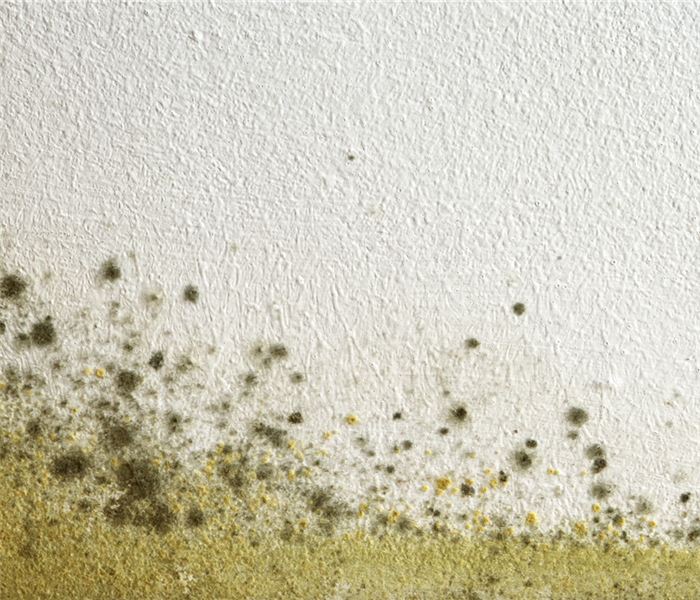 If you detect mold growth, remove affected areas promptly and adjust your care routine accordingly.
If you detect mold growth, remove affected areas promptly and adjust your care routine accordingly.
In New Hyde Park, NY, our love for indoor plants knows no bounds. They not only add a touch of nature to our homes but also contribute to a healthier indoor environment. However, one challenge plant enthusiasts may face is the potential for mold growth in and around their beloved green companions. In this blog, we will provide you with valuable insights and practical tips to ensure your indoor plants and home remain mold-free and thriving.
- Choose the Right Potting Mix
Opt for well-draining potting soil that helps prevent excess moisture around the roots. A mix designed for your specific plant type can promote healthier growth while reducing the risk of mold.
- Use Proper Drainage
Ensure your pots have drainage holes to prevent water from accumulating at the bottom. Overly wet soil can create an environment where mold thrives. Elevating pots on saucers or using pot feet can also help improve drainage.
- Avoid Overwatering
One of the most common causes of mold in potted plants is overwatering. Only water your plants when the top inch of soil feels dry to the touch. Be sure to empty the saucer beneath the pot after watering to prevent standing water.
- Promote Air Circulation
Good air circulation is essential for preventing mold growth. Position your plants with enough space between them to allow air to flow freely. Using a small fan can also help improve air circulation.
- Prune and Trim Carefully
Remove dead or decaying plant matter promptly to prevent mold from spreading. Be cautious when pruning and avoid leaving cuttings or debris on the soil's surface.
- Use Sterile Tools
When transplanting or repotting, ensure your tools are clean and sterile. This helps prevent the introduction of mold spores into the soil.
- Keep Humidity in Check
While some plants thrive in humid conditions, excessive humidity can encourage mold growth. Use a hygrometer to monitor humidity levels in your home and adjust as needed.
- Choose Mold-Resistant Plants
Some plant varieties are naturally more resistant to mold than others. Research and select plants that are less prone to mold issues for your indoor garden.
- Inspect for Mold
Regularly inspect your plants and soil for any signs of mold. If you detect mold growth, remove affected areas promptly and adjust your care routine accordingly.
- Quarantine New Additions
When introducing new plants to your collection, quarantine them for a few weeks to ensure they are mold-free before integrating them with your existing plants.
Indoor plants can bring beauty and tranquility to your New Hyde Park, NY, home. By following these practical tips and maintaining a watchful eye on your greenery, you can create a healthy and mold-free environment for both your beloved plants and your family. Should you ever encounter mold issues that require professional attention, SERVPRO® of New Hyde Park/Mineola is here to help. Our experts are trained to handle mold remediation efficiently, ensuring a safe and mold-free living space for you and your indoor garden.
How to Identify and Address Hidden Water Leaks in Your Home
10/8/2023 (Permalink)
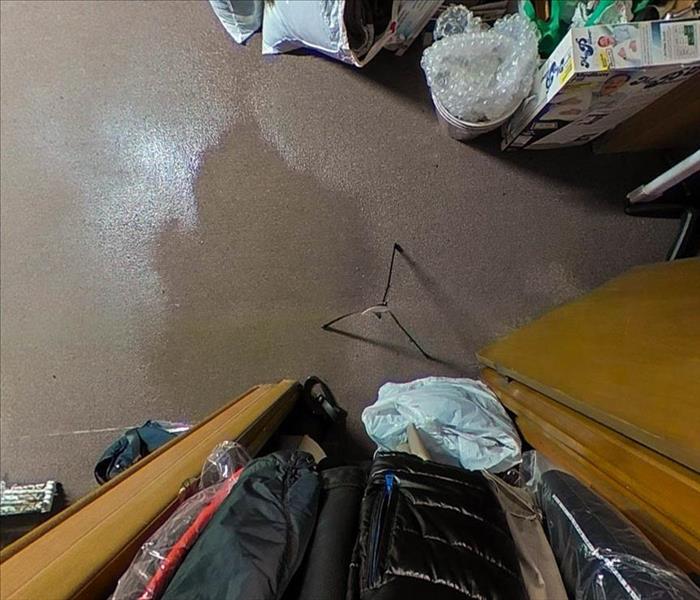 These concealed issues can silently damage your property, leading to structural problems and mold growth if left unchecked.
These concealed issues can silently damage your property, leading to structural problems and mold growth if left unchecked.
While New Hyde Park boasts its own unique charm, it's not immune to the challenges of hidden water leaks. These concealed issues can silently damage your property, leading to structural problems and mold growth if left unchecked. In this blog, we'll explore the significance of identifying and addressing hidden water leaks, providing valuable insights to help protect your New Hyde Park residence.
Identifying Hidden Water Leaks
Unexplained Water Usage: If your water bills have recently surged without a clear explanation, it may indicate an undetected water leak.
Mold and Mildew Growth: Mold and mildew thrive in damp conditions. If you notice mold on walls, ceilings, or other surfaces, it might be a sign of hidden water damage.
Musty Odors: Persistent musty or earthy odors in your home can be an indicator of hidden water damage or mold growth.
Water Stains: Discoloration on walls, ceilings, or floors could signal water seepage from a concealed leak.
Damp or Distorted Flooring: Wooden or laminate floors that appear warped, cupped, or discolored may be suffering from water damage caused by an unseen leak.
Addressing Hidden Water Leaks
Immediate Water Shut-Off: If you suspect a hidden leak, shut off your water supply immediately to prevent further damage.
Consult a Professional: Reach out to a licensed plumber or a water leak detection specialist. They possess the tools and expertise to accurately locate hidden leaks.
Roof Inspection: Hidden leaks often originate from roof issues. Arrange for regular roof inspections, particularly after severe weather.
Check Plumbing Fixtures: Regularly inspect plumbing fixtures, such as faucets, toilets, and showerheads, for signs of leaks. Even minor drips can lead to concealed damage over time.
Examine the Water Meter: Turn off all water sources in your home and check your water meter. If it continues to run, a hidden leak may be present.
Monitor Utility Bills: Keep a close watch on your water and utility bills. Unexplained spikes can suggest hidden leaks.
Address the Damage: If you discover a hidden leak, take immediate action to address the resulting damage. This may involve water damage restoration, mold remediation, or structural repairs.
Final Thoughts
Identifying and addressing hidden water leaks is crucial to preserving the condition of your New Hyde Park, NY, property. By staying vigilant for signs of concealed leaks and taking swift action when they are detected, you can prevent extensive damage and costly repairs. Remember that SERVPRO® of New Hyde Park/Mineola is here to assist New Hyde Park residents with professional cleanup and restoration services, should you ever encounter hidden water damage. Our experts are dedicated to helping you protect your home and the welcoming community of New Hyde Park.
The Challenges of Urban Storm Preparedness in the Northeast
9/12/2023 (Permalink)
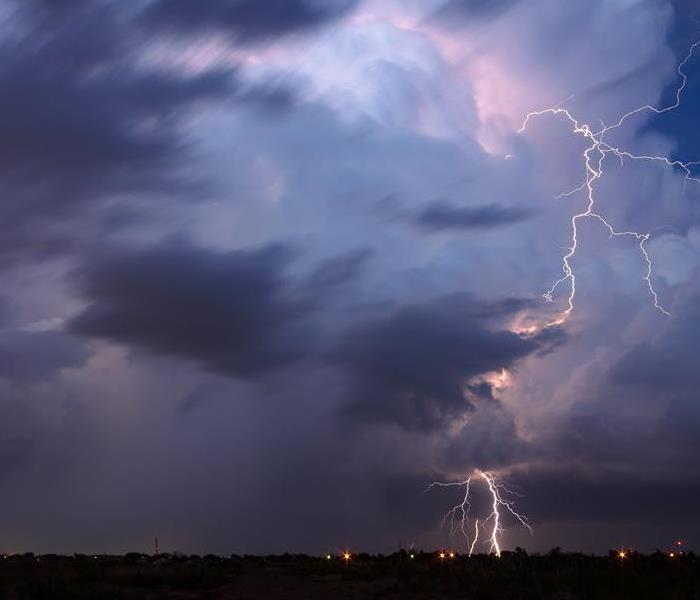 Be prepared incase of a severe storm in New Hyde Park.
Be prepared incase of a severe storm in New Hyde Park.
When it comes to storm preparedness, urban areas in the Northeast face their own set of unique challenges. The combination of dense population, concrete surfaces, and limited green spaces poses specific obstacles for residents and city officials. In this blog post, we will explore the unique challenges of urban storm preparedness in Northeast cities and offer strategies to help residents stay safe during severe weather events.
Limited Green Spaces
One of the biggest challenges of urban storm preparedness in Northeast cities is the limited availability of green spaces. With concrete dominating the landscape, there is a scarcity of trees and other vegetation that can absorb excess rainwater and reduce the risk of flooding. This lack of natural drainage increases the likelihood of urban flooding, making it crucial for residents to be aware of potential risks in their neighborhoods and have a plan in place to seek higher ground or evacuation if necessary.
Overburdened Stormwater Systems
Urban areas in the Northeast often rely on stormwater systems to manage heavy rainfall. However, these systems may already be overburdened due to their age and inability to handle the increased volume of water associated with severe storms. Combined with limited green spaces, this can lead to quicker and more severe flooding. Residents should be aware of areas prone to flooding and avoid them during storms. Additionally, city officials need to invest in upgrading stormwater systems to ensure they can effectively handle heavy rainfall.
Transportation and Evacuation Challenges
Transportation and evacuation can pose significant challenges in densely populated areas during severe weather events. Urban congestion, limited evacuation routes, and compromised public transportation systems can make it difficult for residents to find safe shelter or escape to safer areas. It is crucial for residents to have a clear evacuation plan in place, including knowing the locations of designated shelters and alternative routes. City officials should prioritize developing and communicating effective evacuation strategies tailored to the unique needs of their urban population.
Power Outages and Utility Failures
Urban areas heavily rely on consistent and robust power and utility services. However, severe storms can result in power outages and failures in critical infrastructure. The lack of power and other utilities can have significant consequences, such as disruptions to communication, transportation, and access to essentials like clean water and medical services. Residents should have emergency kits that include backup power sources, flashlights, and a supply of non-perishable food and water. Cities must invest in resilient infrastructure and have contingency plans to quickly restore power and utilities after storm events.
Communication and Education
Effective communication and education play a vital role in urban storm preparedness. However, reaching a large and diverse population in urban areas can be a challenge. Local authorities should invest in comprehensive and accessible communication strategies that utilize multiple channels, including social media, emergency alert systems, and multilingual outreach. Providing residents with information on storm preparedness and clear instructions during severe weather events can help save lives and prevent injury.
Urban storm preparedness in Northeast cities comes with its own set of challenges. By raising awareness among residents, investing in resilient infrastructure, and improving communication strategies, cities can better prepare for and mitigate the impact of severe weather events. Together, we can make our urban areas safer and more resilient in the face of storms.
Reviving from the Ashes: Exploring the World of Fire Damage Restoration
8/17/2023 (Permalink)
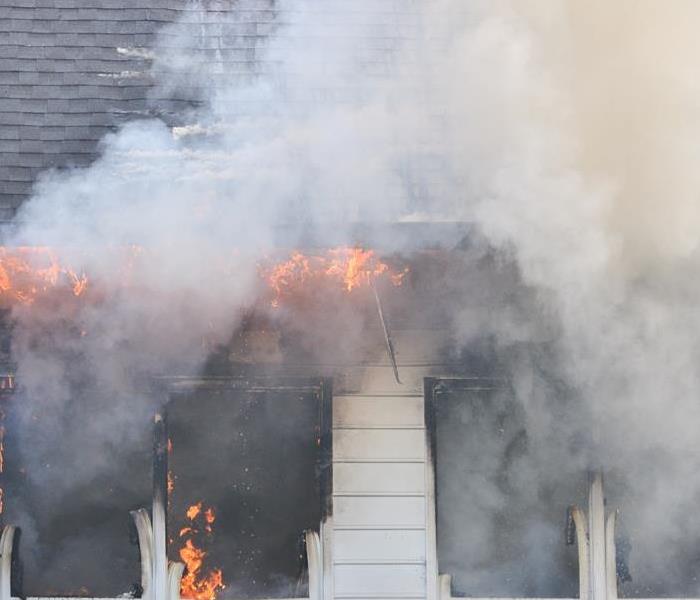 When a fire breaks out in your home, the process requires expertise and specialisted equipment.
When a fire breaks out in your home, the process requires expertise and specialisted equipment.
A fire is one of the most devastating events that can occur in a building, leaving destruction and chaos in its wake. Beyond the immediate impact of flames, the aftermath presents a new challenge: fire damage restoration. This comprehensive process is designed to mitigate the effects of fire, smoke, and water damage, and restore the building to its pre-fire condition. In this article, we will delve into the intricacies of fire damage restoration and shed light on the steps involved in the restoration journey.
Assessment and Planning
The first step in fire damage restoration is a thorough assessment of the affected areas. Trained professionals will evaluate the extent of damage, including the structural integrity, smoke residue, water damage from firefighting efforts, and potential hazards. Based on this assessment, a detailed plan is developed to guide the restoration process.
Safety Measures
Safety is paramount during fire damage restoration. The restoration team will ensure that the building is structurally stable and safe for entry. They will also identify and address any potential hazards, such as weakened structures, electrical issues, or hazardous materials, before commencing restoration work.
Water Extraction and Drying
If water damage is present due to firefighting efforts, the restoration team will focus on water extraction and drying. Specialized equipment, such as pumps, vacuums, and dehumidifiers, will be used to remove excess water and moisture from the affected areas. Thorough drying prevents mold growth and further damage to the building's structure.
Smoke and Soot Removal
Smoke and soot can permeate surfaces, leaving behind stains, odors, and potential health hazards. The restoration team will employ specialized techniques to remove smoke residue, including dry cleaning, wet cleaning, and specialized cleaning agents. This process also includes deodorization to eliminate lingering smoke odors.
Structural Repairs and Reconstruction
Depending on the severity of the fire, structural repairs and reconstruction may be necessary. Damaged materials, such as drywall, flooring, or insulation, will be replaced to restore the building's integrity. The restoration team will work closely with contractors and skilled professionals to ensure proper rebuilding and structural stability.
Content Cleaning and Restoration
Fire damage often affects personal belongings, furniture, and valuable items within the building. The restoration team will carefully assess and clean these items, employing specialized techniques such as dry cleaning, wet cleaning, or ultrasonic cleaning. Some items may require off-site restoration, where they are transported to a controlled facility for thorough cleaning and restoration.
Final Cleaning and Restoration
Once structural repairs and content cleaning are complete, a final cleaning and restoration process takes place. This involves a comprehensive cleaning of all surfaces, including walls, ceilings, and floors, to remove any remaining residue or debris. The goal is to ensure the building is restored to its pre-fire condition, both aesthetically and functionally.
Fire damage restoration is a complex and multifaceted process that requires expertise, specialized equipment, and meticulous attention to detail. By understanding the steps involved in fire damage restoration, building owners can appreciate the importance of engaging professional restoration services promptly. This comprehensive restoration process not only helps in recovering the physical aspects of the building but also aids in rebuilding hope and resilience for those affected by the fire.
Is Your Water Heater Making Noises? 6 Common Causes
7/27/2023 (Permalink)
Your water heater is an essential appliance that provides hot water for various household activities. However, if you've noticed strange noises coming from your water heater, it can be concerning and may indicate an underlying issue. In this blog post, we'll explore common reasons why your water heater might be making noises and discuss potential solutions to address the problem.
Sediment Buildup
One of the primary culprits behind noisy water heaters is sediment buildup. Over time, minerals and debris can accumulate at the bottom of the tank, causing popping or rumbling sounds during heating cycles. This happens when the sediment comes into contact with the heating element or burner. Regular flushing of your water heater can help prevent sediment buildup and reduce the noise caused by it.
Consider performing routine maintenance by flushing your water heater to remove sediment. Follow the manufacturer's instructions or consult a professional plumber to ensure proper and safe execution.
Expansion and Contraction
As the water inside the tank heats up, it expands, leading to pressure buildup. This expansion can result in popping or cracking noises. Similarly, when the water cools down, the tank and its components contract, which can also generate audible sounds. These expansion and contraction noises are usually harmless but can be alarming if you're not familiar with them.
There's no specific solution required for expansion and contraction noises as they are a natural occurrence. However, if the sounds persist or are accompanied by other issues, it's advisable to have a professional inspect your water heater.
Loose Heating Elements or Components
Over time, the heating elements or other components within the water heater can become loose due to thermal expansion and contraction or regular use. Loose elements or parts may vibrate, causing rattling or humming noises during operation.
If you suspect loose components, it's best to have a professional plumber inspect the water heater. They can tighten or replace any loose parts to eliminate the noise and ensure the proper functioning of the unit.
Mineral Deposits on Heating Elements
In areas with hard water, mineral deposits can form on the heating elements inside the water heater. When the water heats up, these deposits can cause a sizzling or hissing sound as they burn off or react with the heat.
Flushing the water heater and periodically descaling the heating elements can help remove mineral deposits. If the deposits are severe or persistent, it's recommended to consult a professional plumber for proper cleaning and maintenance.
Pressure Relief Valve Issues
The pressure relief valve is a safety feature of the water heater that releases excess pressure to prevent tank rupture. If the valve is faulty or defective, it may cause hissing or leaking noises. A malfunctioning pressure relief valve should be addressed promptly to ensure the safe operation of your water heater.
If you suspect a problem with the pressure relief valve, it's essential to have a professional plumber inspect and replace it if necessary. It's crucial not to attempt to repair or replace the valve yourself, as it requires specialized knowledge and skills.
Aging or Failing Water Heater
In some cases, unusual noises from your water heater may indicate that it is aging or nearing the end of its lifespan. Components may wear out, and the tank itself can become weakened, leading to increased noise during operation.
If your water heater is old or exhibiting multiple issues, it may be time to consider replacing it. Consult a professional plumber to assess the condition of your water heater and provide recommendations for a suitable replacement unit.
Unusual noises coming from your water heater can be a cause for concern, but they often have straightforward explanations and solutions. By understanding the common causes of water heater noises, such as sediment buildup, expansion/contraction, loose components, mineral deposits, pressure relief valve issues, or an aging unit, you can take appropriate steps to address the problem. Regular maintenance, professional inspections, and timely repairs or replacements will ensure a reliable and efficient water heater that operates quietly, providing hot water when you need it.
Sewage Backups: Prevention and Quick Action for Homeowners
7/25/2023 (Permalink)
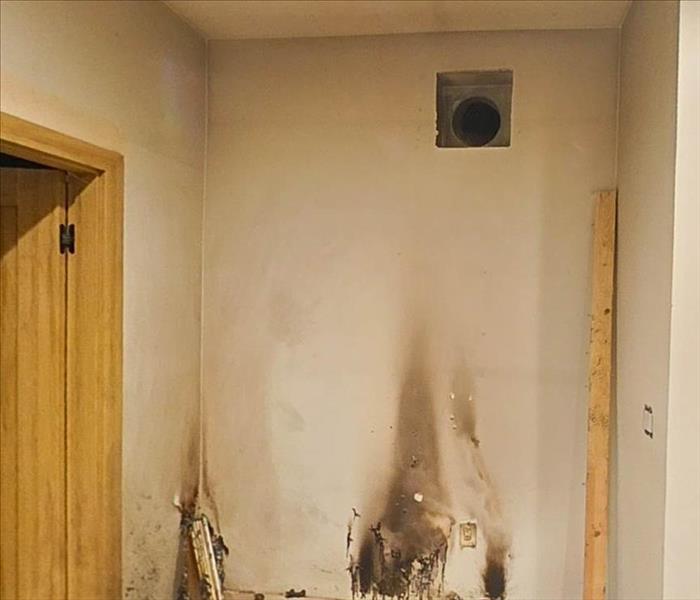 Prevent sewage damage with these easy tips!
Prevent sewage damage with these easy tips!
A sewage backup is a nightmare no homeowner wants to face. The foul odors, potential health hazards, and costly repairs can turn a pleasant home into a chaotic disaster. However, by understanding the common causes of sewage backups and taking preventive measures, homeowners can significantly reduce the risk of encountering this unpleasant situation. In this blog, we will explore the essential steps you can take to prevent sewage backups and the prompt actions you should follow if you ever encounter such a situation in your property.
1. Common Causes of Sewage Backups
To effectively prevent sewage backups, it's crucial to understand the common reasons they occur. Some of the main causes include:
a. Clogged Pipes and Drains: The buildup of grease, food debris, hair, and other substances can lead to blockages in pipes and drains, causing sewage to back up into your home.
b. Tree Root Intrusions: Tree roots seeking moisture can infiltrate sewer lines and cause blockages or even structural damage, resulting in sewage backups.
c. Aging Sewer Systems: Over time, sewer lines and systems can deteriorate, leading to leaks, collapses, or blockages that cause sewage to back up.
d. Heavy Rainfall and Flooding: During heavy rainstorms or flooding, the excess water can overwhelm the sewer system, causing sewage to back up into properties.
2. Prevention Tips to Avoid Sewage Backups
Prevention is always better than dealing with the aftermath of a sewage backup. Follow these tips to reduce the risk of encountering this messy situation:
a. Be Mindful of What Goes Down the Drain: Avoid disposing of grease, oil, coffee grounds, sanitary products, and large food scraps down the drain. Use drain strainers to catch hair and debris in sinks and showers.
b. Regular Maintenance: Schedule regular inspections and maintenance of your sewer system by professionals. This includes checking for tree root intrusions, identifying any aging or deteriorating pipes, and clearing blockages.
c. Proper Landscaping: When planting trees and shrubs near your property, be cautious of their proximity to sewer lines. Consult with an expert to ensure their roots won't cause damage to the sewer system.
d. Install Backwater Valves: Consider installing backwater valves on your main sewer line to prevent sewage from flowing back into your home during heavy rainfall or flooding.
3. Immediate Actions During a Sewage Backup
Despite your best efforts, sewage backups can still occur. If you encounter such a situation, take the following immediate actions:
a. Stay Safe: Avoid contact with the sewage water, as it may contain harmful bacteria and pathogens. Use protective gear such as gloves and boots if you need to enter the affected area.
b. Turn Off Water Usage: Stop using water in your home to prevent further sewage flow into the affected areas.
c. Contact Professionals: Immediately call a sewage cleanup and restoration specialist like SERVPRO of New Hyde Park/Mineola to handle the situation safely and efficiently.
d. Document the Damage: Take photos or videos of the damage for insurance purposes before any cleanup or repairs begin.
Sewage backups are not only inconvenient but also pose health risks and can cause extensive damage to your property. By understanding the common causes of sewage backups and taking preventive measures, you can significantly reduce the likelihood of encountering this messy situation. In the event of a sewage backup, swift action is essential. Contacting a professional sewage cleanup and restoration company like SERVPRO of New Hyde Park/Mineola ensures a safe and thorough cleanup, helping you restore your home to its pre-incident condition. Remember, with the right knowledge and proactive steps, you can safeguard your property and family from the hassle and stress of sewage backups.
Understanding Severe Weather: Definitions and Impacts
6/10/2023 (Permalink)
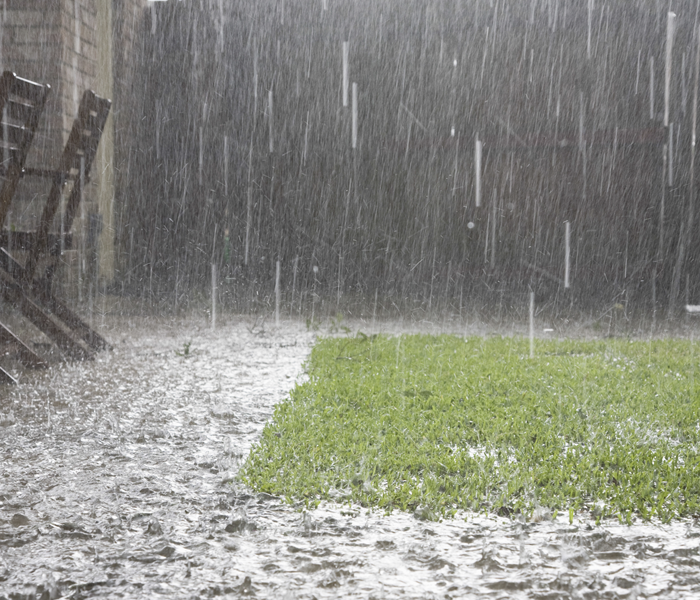 Severe weather can be devastating, be weather aware!
Severe weather can be devastating, be weather aware!
Severe weather is a term that encompasses a range of meteorological events that can cause significant damage to homes and businesses. Understanding the different types of severe weather and their definitions can help individuals prepare and respond appropriately when these events occur.
Tornadoes
A tornado is a violent, rotating column of air that extends from a thunderstorm to the ground. Tornadoes are characterized by their funnel shape and high winds, which can reach speeds of up to 300 miles per hour. They are most common in the central United States and can cause significant damage to buildings, vehicles, and other structures.
Hurricanes
A hurricane is a large, rotating storm that forms over warm ocean waters. Hurricanes are characterized by their strong winds, heavy rainfall, and storm surge, which can cause coastal flooding. Hurricanes are classified based on their wind speed, with Category 5 hurricanes being the most severe. They can cause widespread damage to homes, businesses, and infrastructure.
Thunderstorms
A thunderstorm is a weather phenomenon characterized by lightning, thunder, and precipitation. Thunderstorms can produce high winds, hail, and tornadoes, and can cause damage to buildings and vehicles. They are most common in the summer months and are often accompanied by heavy rain and flash flooding.
Floods
A flood is a natural disaster caused by an overflow of water onto land that is normally dry. Floods can occur as a result of heavy rainfall, snowmelt, or coastal storms. They can cause significant damage to homes and businesses, as well as infrastructure such as roads and bridges.
Blizzards
A blizzard is a severe winter storm characterized by strong winds, heavy snowfall, and low visibility. Blizzards can cause power outages, road closures, and damage to buildings and other structures. They can also be life-threatening, particularly for those who are exposed to the elements for an extended period of time.
Key Takeaways for Severe Weather Preparedness and Restoration Services
In conclusion, understanding the different types of severe weather and their definitions is essential for individuals to prepare and respond appropriately when these events occur. It is important to stay informed about severe weather forecasts and to have an emergency plan in place to protect yourself, your family, and your property. In the event of severe weather damage to your home or business, it is best to seek the services of a professional restoration company to ensure that the damage is properly assessed and repaired.
Mold in Rental Properties: Responsibilities of Landlords and Tenants
5/30/2023 (Permalink)
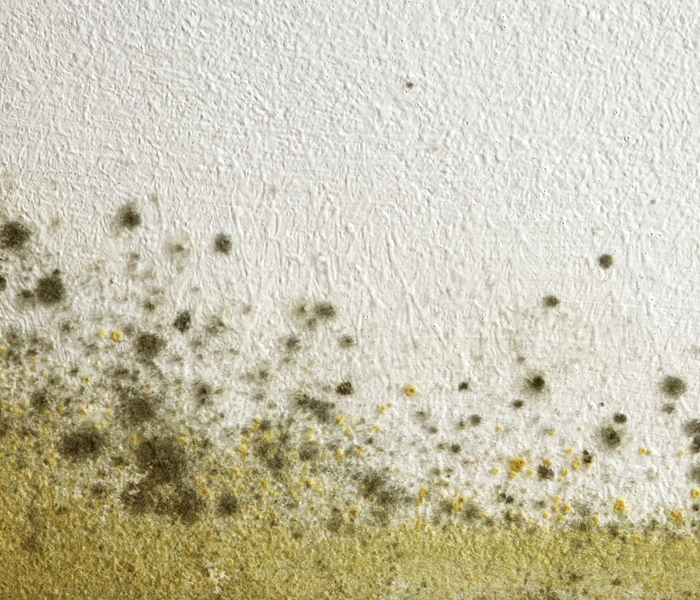 When it comes to mold in rental properties, understanding the responsibilities of both landlords and tenants is crucial.
When it comes to mold in rental properties, understanding the responsibilities of both landlords and tenants is crucial.
When it comes to mold in rental properties, understanding the responsibilities of both landlords and tenants is crucial. Mold growth can pose serious risks and cause property damage, making it essential for all parties involved to address the issue promptly. In this blog, we will discuss the responsibilities of landlords and tenants regarding mold prevention, detection, and remediation, ensuring a safe and healthy living environment for everyone.
Landlord's Responsibilities:
As the property owner and landlord, you have certain obligations to ensure the rental property remains free from mold and provides a safe living environment. Here are the key responsibilities you should be aware of:
Regular Property Maintenance: It is the landlord's responsibility to maintain the property properly, including addressing any issues that may contribute to mold growth, such as leaks, plumbing problems, or inadequate ventilation.
Timely Repairs: Landlords should promptly address any reported leaks, water damage, or plumbing issues that could potentially lead to mold growth. Timely repairs and maintenance can help prevent the conditions that foster mold development.
Providing Adequate Ventilation: Proper ventilation is essential for controlling moisture levels and preventing mold. Landlords should ensure that rental properties have adequate ventilation in areas prone to moisture accumulation, such as bathrooms, kitchens, and laundry rooms.
Educating Tenants: Landlords should provide tenants with information on mold prevention, early detection, and proper maintenance practices. This can include guidance on proper ventilation, controlling moisture, and promptly reporting any signs of mold growth.
Tenant's Responsibilities:
Tenants also play a significant role in mold prevention and maintenance of rental property. Here are the key responsibilities tenants should be aware of:
Regular Cleaning and Maintenance: Tenants should keep the rental property clean and undertake regular maintenance tasks. This includes promptly reporting any leaks, water damage, or plumbing issues to the landlord.
Proper Ventilation and Air Circulation: Tenants should ensure that the property is adequately ventilated, utilizing exhaust fans during activities that generate moisture, like cooking or showering. Opening windows when weather permits can also help improve air circulation.
Preventing Excessive Moisture: Tenants should take precautions to prevent excess moisture buildup, such as wiping down condensation on windows, using bathroom fans while showering and properly using and maintaining appliances like clothes dryers.
Reporting Mold Concerns: If tenants notice any signs of mold growth, such as musty odors, visible mold, or unexplained health issues, they should promptly report the concern to the landlord. Early detection and intervention can help prevent further damage and health risks.
Collaboration and Communication:
Open communication and collaboration between landlords and tenants are vital for addressing mold issues effectively. Both parties should promptly respond to each other's concerns, working together to resolve any mold-related problems. Documenting communication and any remediation efforts can help ensure transparency and clarity.
Mold prevention and remediation in rental properties require the joint efforts of landlords and tenants. Landlords must fulfill their responsibilities by maintaining the property and addressing maintenance issues promptly, while tenants should take preventive measures and report any mold concerns. By working together, both parties can create a safe and healthy living environment, reducing the risks associated with mold growth.



 24/7 Emergency Service
24/7 Emergency Service






